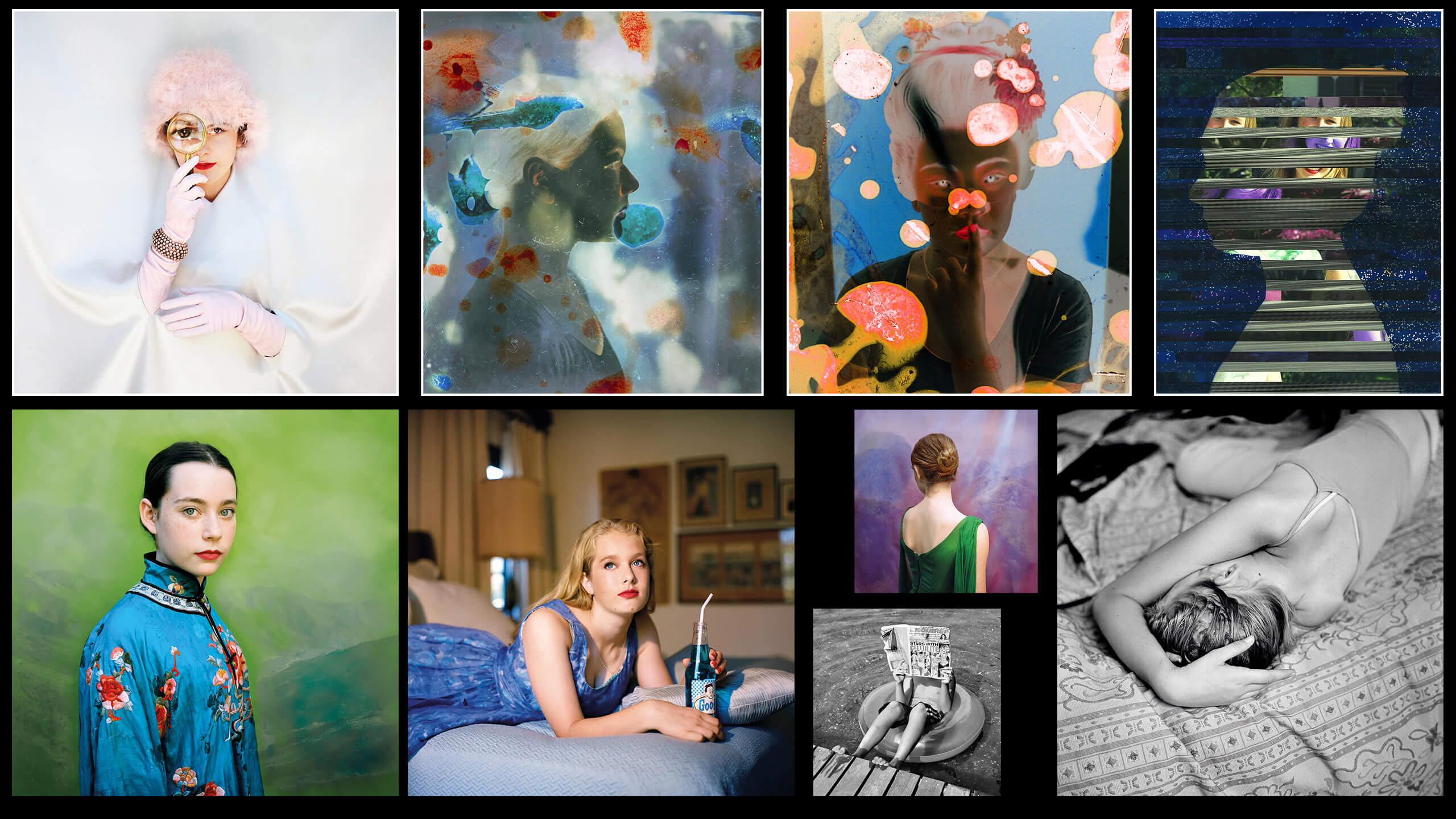“…my children have never made prints of their photographs, preferring to experience them on a screen. It made me realize the potential loss of the photograph as object to future generations… my children may not have any images to show their grandchildren as they rely on social media sites to host their photographic legacies.” Aline Smithson
Aline Smithson is a photographer working exclusively with film and focusing on creating fine art images as her personal work. The seed of her passion for photography was during the decade she spent as a fashion editor in New York. She worked with notable photographers — Patrick Demarchelier, Arthur Elgort and Mario Testino.
Los Angeles
Aline Smithson’s husband took a position in Los Angeles so she left fashion editing and moved back to her native city with him.
One day, she found her uncle’s 1960s-era Rolleiflex film camera. “I fell in love with medium format, and discovered that photography is a language that allows me to have a visual voice,” she said.
“I fell in love with medium format, and discovered that photography is a language that allows me to have a visual voice.
“With the exception of a few classes at the beginning, I am self-taught,” Aline Smithson said, “I spent years learning my craft in the wet darkroom, learning how to see — I also spend tons of time looking at photography for my blog, Lenscratch, where I feature the work of a different photographer each day. I am still very much a student and always curious about the intention behind someone’s photographs.”
Aline Smithson knows that working as a fine art photographer will not pay the bills for a long time if ever. “I wouldn’t say that making photographs has been a sacrifice,” she said. “But all that surrounds it — my teaching, my blog, my writing, working as a reviewer and juror, tutoring — all take away from the time I have to make my own work.”
Shooting film
Aline Smithson has always used film. She bought a digital camera at Costco but never took it out of the box. She finally gave it away.
“I love the slowed-down nature or working with film… I love the traditions of the film experience: loading a roll and waiting to see the results,” she said. “I love rolling my 120 film nice and tight and then licking the sticker that keeps it that way. Each roll is a little gift. I do all my editing in the camera, shooting very few images. I also like that I have a tangible legacy to pass on… if my hard drive crashes, I still have my photographs.”
Portraits as fine art
Aline Smithson is a specialist in making fine art portraits. She works alone. She does the styling, makeup and wardrobe often by thrifting or borrowing clothes from friends.
“I find that making portraits is a collaborative process where the experience becomes a two-way gaze when both the subject and I reveal ourselves to each other,” she said.
“For the most part, I create work close to home, using subjects that are family, friends, neighbors, and friends of friends,” She said. “That familiarity with place and person allows for an intimacy and camaraderie, where my sitters trust in my desire to present them with dignity or with humor, but always in a way that celebrate who they are” (opening photo, bottom row, all images.)
Digital black hole
Aline Smithson scans her negatives. She had a hard drive fail that stored 20 years of those scans.
“In my attempt to recover the files, only half came back in a format that was accessible. The rest of the files were corrupted, each totally unique in how the machine damages and reinterprets the pixels,” Aline Smithson said. “This alarming result made me begin to consider ever-shifting digital platforms and file formats, and I realized that much of the data we produce today could eventually fall into a black hole of inaccessibility.”
Fugue State
“I created a series of portraits and then wounded the film emulsion to speak to this loss and the potential disappearance of the photographic image.”
“As an analog photographer, rather than let the machine have the last word, I have cyanotyped over my damaged digital scans,” Aline Smithson said in an interview with the Griffin Museum.
“I use silhouettes of portraits from my archives to conceal and reveal the corruption. By using historical processes to create a physical object, I guarantee that this image will not be lost in the current clash between the digital file and the materiality of a photographic print.”
Fugue State Revisited is the body of work that came from that lost drive. It brings attention to digital files that may not hold their original state or even become unreadable in the future.
The Getty Research Institute notes “While you are still able to view family photographs printed over 100 years ago, a CD with digital files on it from only 10 years ago might be unreadable because of rapid changes to software and the devices we use to access digital content” (opening photo, top row, last three images.)
Words for photographers starting out
“First, stay anonymous as long as possible. I know this sounds peculiar, but the years of creating photographs solely for myself were some of the best years on this journey. Make your mistakes and try out new ideas in private.”
“Second, be humble and grateful. Thank everyone. Take the time to acknowledge what others contribute to your work and journey.”
“And third, find your own voice—don’t copy others. Use your own life for inspiration, tell your stories, be fearless. Your best teacher is failure.”
Sources: All About Photo, Griffin Museum, Hasselblad.
Read more stories about inspirational photographers in On Photography.
Source link




Leave a Reply